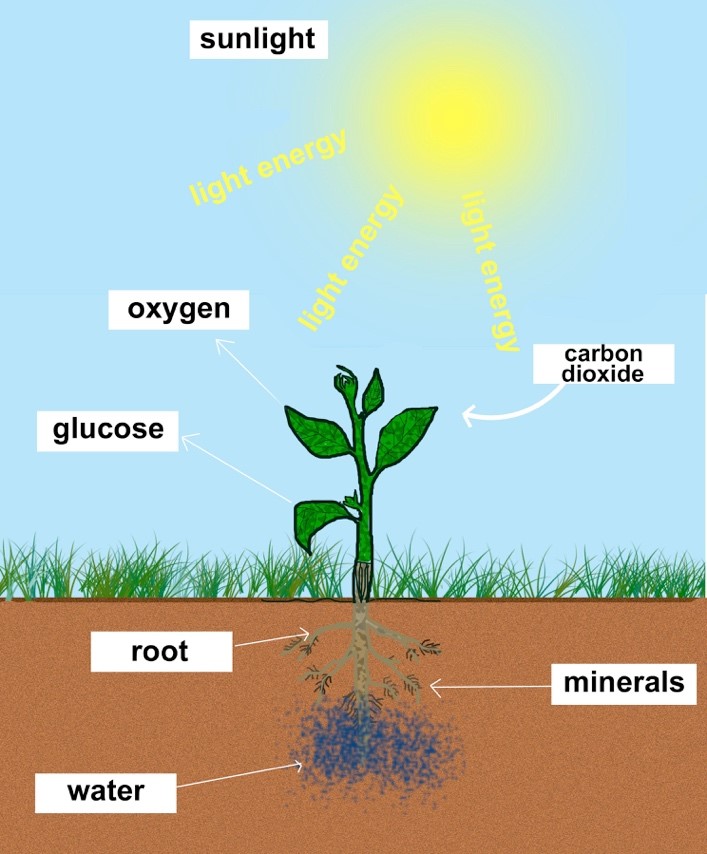
Photosynthesis
6CO2+6H20+ ENERGY-> C6H12O6 + 6O2
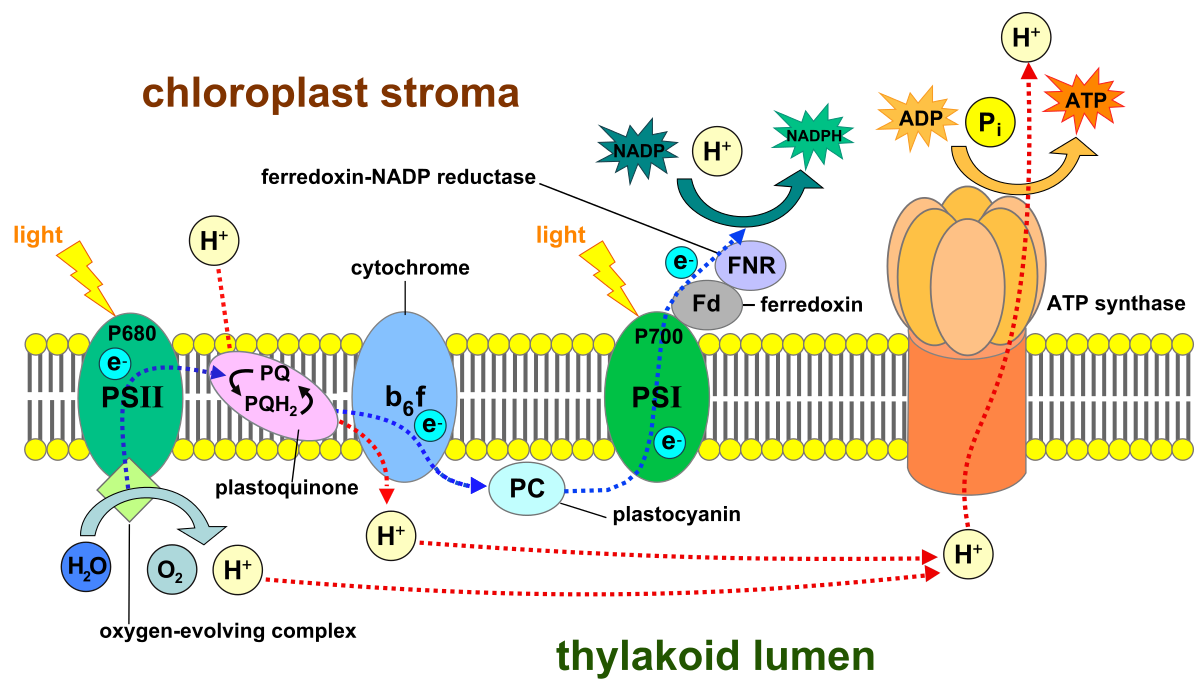
Step 1 is the LIGHT DEPENDENT REACTION: the organism uses sunlight to make carrier molecules which then are used for energy. ( Mayer) sunlight interacts with chlorophyll which makes electrons go to a higher energy state. ATP and NADPH are made via photophosphorylation and oxygen is released as waste. (Mayer)

Step 2 light-independent or dark reaction: In this step it involves converting six molecules of carbon dioxide into one molecule of glucose, through the calvin cycle. (Mayer)
step 3 glucose transportation and storage: Glucose is removed from the leaves and distributed to the rest of the plant. Plants will retain some oxygen and use it for later use. (Brooks)
IMPORTANCE: Photosynthesis is a process that captures energy from the sun and converts it to chemical energy, known as G3P which is then used to be made into sugars.

Chloroplasts are surrounded by two membranes. The outer membrane is permeable to small organic molecules and the other one is less permeable. They also have a third membrane called the thylakoid membrane which is extensively folded. (Chloroplasts, and Cell Walls).
The function of chloroplasts are to carry out photosynthesis, chloroplasts are important for the survival of plants. They take light energy and turn it into a form that powers activities.
Structure: Chloroplasts are oval shaped and have 2 membranes, the space that is within the inner membrane is called the stroma. The inner membrane has many folds that is known as cristae, these absorb surface area. In vascular plants the thylakoids are stacked on one another and a stack of them is called a granum. The thylakoids contain chlorophylls and carotenoids which absorb the light. These light absorbing pigments are grouped together to form photosystems.
/cutaway-illustration-of-plant-chloroplast-680790343-588b47f83df78caebcfceb00.jpg)
Thykaloids Thylakoids are membrane-bound compartments inside chloroplasts and cyanobacteria

Membrane envelope is The nuclear envelope protects the cell's genetic material from the chemical reactions that take place outside the nucleus.

Intermembrane space is the space occurring between or involving two or more membranes.
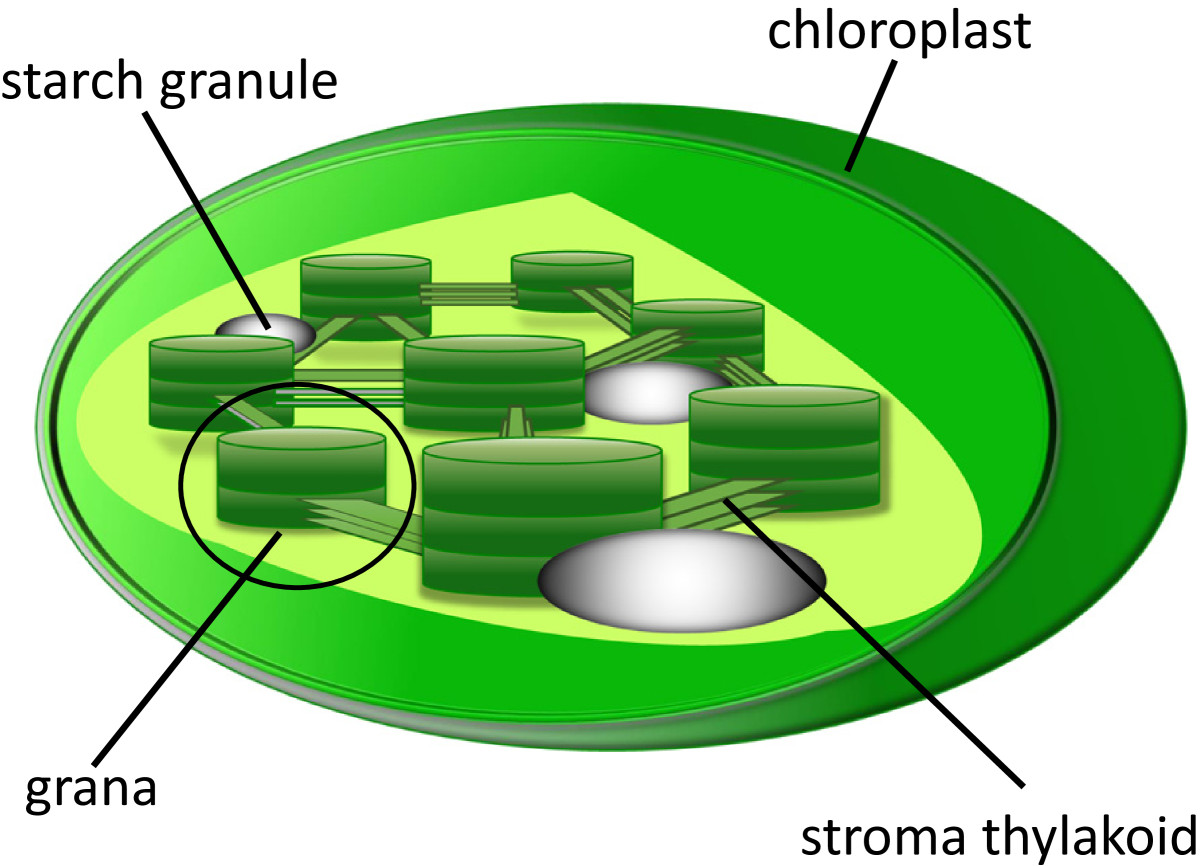
Stroma colorless fluid surrounding the grana within the chloroplast.
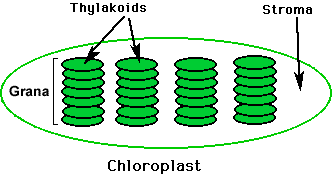
Grana stacks of structures called thylakoids, which are little disks of membrane on which the light-dependent reactions of photosynthesis take place

Chlorophyll is the natural compound present in green plants that gives them their color.
Step 4:Plants must photosynthesize more then they can respire. (Brooks)
Light dependent reactions:
Use light energy to make 2 molecules ATP and the reduced electron carrier NADPH.
They begin with grouping of pigment molecules which is known as photosystem. A pigment molecule absorbs one photon a time.
High energy electrons travel down the ETC, H+ ions get pumped from the stroma into the thylakoid interior. they pass through ATP synthase, creating ATP
Electrons arrive at photosystem 1 and joins the P700 special pair of chlorophylls. P700 then is boosted to a very high energy level. (Khan Academy)
After the ETC, he electron is passed to NADPH to make NADH
Light Independent reactions
CO2 and an enzyme called ribulose bisphosphate carboxylase (RuBisCO), and three molecules of ribulose bisphosphate (RuBP) are present to initate this reaction.
ATP and NADPH are used to convert 3-PGA into six molecules of a chemical called glyceraldehyde 3-phosphate
one of the G3P molecules goes to calvin cycle.
three turns make six G3Ps in the calvin cycle. remaining five G3P molecules remain in the cycle and are used to regenerate RuBP. (Lumen learning)
.PNG)
noncylic electron flow
":When photosystem II absorbs light, an electron excited to a higher energy level in the reaction center chlorophyll ". An enzyme extracts electrons from water and supplies them to P680. Then electrons move down the ETC, their exergonic “fall”to a lower energy level, and ATP is produced.
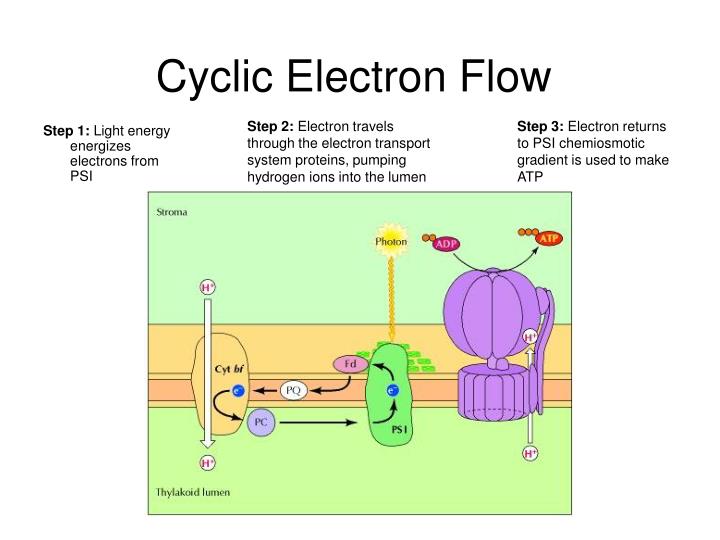
Cylic electron flow
causes electrons to flow in a cyclic pattern.
electrons are transported back to P700 in this flow.
plants have developed a set of mechanisms to adapt the photosynthetic process.